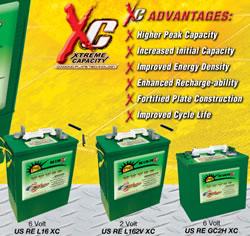Alliance to Save Energy Advises Using Energy Efficiency to Address Spiking Heating Costs
With average heating costs across the nation spiking about 11 percent over last winter's, the Alliance to Save Energy recommends energy-efficiency measures to help consumers cut home energy bills,
-- See EPA's Useful Online Tools at www.energystar.gov --
Washington D.C, January 2008 - Already, many parts of the country are facing severe winter weather, although the season began only recently. And with average heating costs across the nation spiking about 11 percent over last winter's, the Alliance to Save Energy recommends energy-efficiency measures to help consumers cut home energy bills, increase indoor comfort, and reduce power plant emissions that contribute to climate change.
"This winter, U.S. consumers face heating costs of close to $1,000," noted Alliance President Kateri Callahan. "Further, total 2008 home energy costs for U.S. households are projected at close to $2,200. That's a huge bite out of the family budget. But consumers can reduce those costs by up to 30 percent, and even more in some cases, with simple yet effective energy-efficiency measures."
The Alliance has prepared a winter home energy fact sheet for each state and the District of Columbia, as well as for the country as a whole (www.ase.org/statefacts). They show consumers how much their heating costs are likely to increase this winter and provide tips on reducing heating and overall household energy bills.
The Alliance also cites useful Web resources from the Environmental Protection Agency (EPA) to help consumers be more energy efficient around the house.
One handy new online tool from EPA, the ENERGY STAR Home Advisor (www.energystar.gov/homeadvisor), recommends home improvement projects to undertake to increase energy efficiency and comfort. Simply enter your ZIP code, the fuels used to heat and cool your home, and the type of water heater you have.
Home improvement recommendations range from sealing air leaks and ducts and adding insulation to replacing HVAC equipment that is more than 10 years old, installing a programmable thermostat, and considering ENERGY STAR qualified products when replacing windows, lighting, appliances, electronics, and home office equipment.
Another EPA Web tool, "Heat Smartly with ENERGY STAR@home" (www.energystar.gov/home) offers a room-by-room "house tour" that identifies opportunities to cut home energy bills while also helping to protect the environment. Blue stars provide tips for saving energy and money inside and outside of the home - from changing the incandescent bulb in the porch light to a compact fluorescent light bulb (CFL) to setting your water heater to 120 degrees or lower .
Many additional money- and energy-saving tips and free resources can be found on the Alliance's consumer web site at www.ase.org/consumers; see Tips to Lower Your Energy Bills and other sections.
###
The Alliance to Save Energy is a coalition of prominent business, government, environmental, and consumer leaders who promote the efficient and clean use of energy worldwide to benefit consumers, the environment, economy, and national security.
Featured Product

U.S. BATTERY RENEWABLE ENERGY SERIES DEEP CYCLE BATTERIES
Our RE Series batteries are designed to provide the highest peak capacity, longest cycle life, and greatest reliability for use in industrial or residential renewable energy applications. Renewable Energy Series batteries utilize the company's exclusive XC2™ formulation and Diamond Plate Technology® to create the industry's most efficient battery plates, delivering greater watt-hours per liter and watt-hours per kilogram than any other flooded lead-acid battery in the market. Our Deep Cycle batteries are engineered to work with solar panels as well as other renewable energy applications.
